Strawberry mite on strawberries: how to fight, when and how to spray (what acaricidal drugs)
Probably, you have met with symptoms of strawberry mite damage to strawberry leaves, or you cannot understand what happened to your strawberry, why its leaves began to deform (wrinkle and curl).
How to deal with strawberry mites on strawberries, how (with what acaricidal preparations) to spray strawberry bushes, read further in our article.
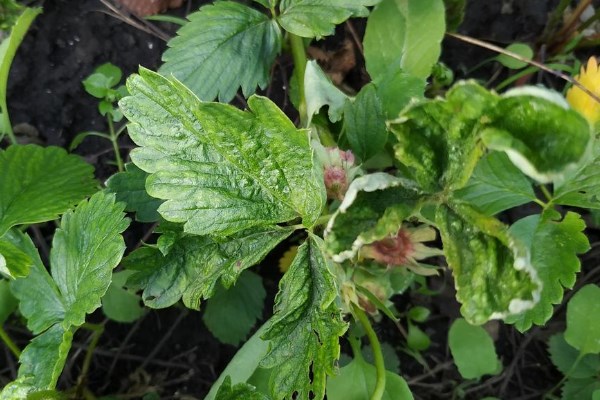
Content
Strawberry mite: what is dangerous, under what conditions it attacks strawberry bushes
The strawberry mite is perhaps the most annoying and dangerous strawberry pest that annoys many gardeners.
Interesting! Ticks are arachnids, i.e. are not insects (from the point of view of biology). Therefore, insect repellents (insecticides) do not work against them; acaricides (or insectoacaricides) are needed to combat ticks.
The ideal conditions for the breeding and attack of the strawberry mite are moderately warm (+ 20-25 degrees) and humid (70-90%) weather.
But spider mites, on the contrary, develop in dry and hot weather (+30 degrees).
During the growing season (under favorable conditions), 4–5 generations (generations) of ticks (imago-egg-larva-imago) develop.
So what is the harmfulness of the strawberry mite?
The fact is that the mite, as a rule, does not spoil the berries (it does not gnaw or eat up), but it sucks the juices from young leaves, due to which the plant is depleted, stops developing and cannot give a normal harvest (the berries are small). Often, such weakened bushes can simply freeze out in winter. Moreover, as a rule, the main damage occurs the next year after the appearance of a tick on plantings (in the first year, the yield decrease is minimal).
Interesting! It is believed that mites are most attracted to the strawberry varieties, which have the most delicate leaves.
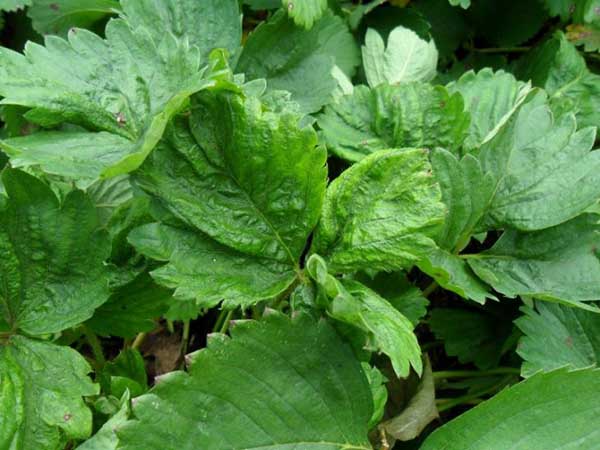
Tick females hibernate in the hearts of the bush (at the base) or between the folds of young leaves.
How can you tell if your strawberry bushes have been attacked by a strawberry mite?
Ticks are very small (less than 1 mm), it is not possible to see them with the naked eye.
Actually, this is probably why it is called the strawberry "transparent" tick.
However, you can determine the presence of a pest on strawberries by changing the shape and color of the leaves.
So, the characteristic symptoms of damage by a strawberry mite are as follows: young leaves damaged by a mite stop developing, shrink, become wrinkled, curl, appear on them oily yellow-brown spots... As a result, with severe damage, the leaves dry out.
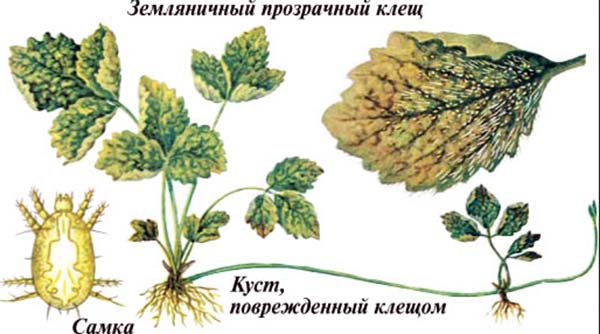
Interesting! It is believed that spider mites also attack strawberries.
Agrotechnical measures for the prevention and control of strawberry mites
- Strawberry mites are often brought into the strawberry garden along with the planting material. Therefore, when buying ready-made seedlings, you should examine carefully their leaves for tick damage.
- You can still disinfect seedlings before disembarking in the garden (for example, dipping for 10-15 minutes in hot +65 degree water).
Only the leaf part and the upper part of the outlet (up to 1 cm!) Need to be lowered into the water, otherwise we can weld the roots.
- Do not plant strawberries in shaded areas or in lowlands, where the most favorable conditions for the reproduction of ticks are formed (humid and moderately warm).
- Regularly prune aboveground parts of plants (mowing leaves)doing it in the spring and in summer after harvest (in autumn)and then burn.
- Annually change mulch and remove (burn) plant residues.
These measures will significantly reduce the number of pests, especially with severe damage to the bushes.
- Old strawberry bushes, badly damaged by a tick, can be removed altogether after harvest (dig up and burn again).
By the way! Strawberries are generally recommended to be periodically refreshed (e.g. mustache) and transplant to a new place (the productive age of the bushes is up to 3-4 years).
When to spray strawberries from mites
Typically, strawberries are processed according to the following scheme:
- in early spring, after the formation of new leaves;
- before flowering (during budding);
- after flowering and the formation of the first ovaries (in very rare cases);
- after harvest.
Moreover, at each of the stages, it is necessary to carry out treatments both against pests and against diseases.
Note! The site has a separate article about how and what to process strawberries in the spring from diseases and pests.
How to treat strawberries from ticks: a list of remedies
So, to fight ticks on strawberries, you need special preparations - acaricideswhich are most often called insectoacaricidessince they destroy other pests as well.
Spraying plants from ticks is very necessary carefully, trying get on the leaves on both sides, i.e. ticks, as a rule, hide from the back (bottom) side.
It is also worth knowing that one treatment will not eradicate a tick (since most acaricides act only against adult adults, egg-laying remains), you will have to perform at least 4 with an interval of 7-14 days.
Important! To prevent the tick from developing immunity (resistance), treatment agents should be periodically alternated. Moreover, not only the name of the drug should change, but also the active substance.
Chemical insectoacaricides
- Tiovit Jet. Active substance - sulfur, contact fungicide and acaricide, against powdery mildew and mites.
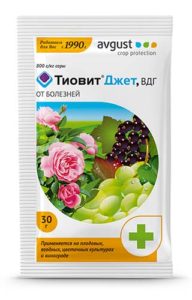
On sale you can find and simply colloidal sulfur (= Tiovit Jet).
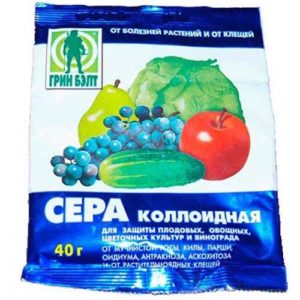
Note! It is useless to work with colloidal sulfur (Tiovit Jet) in cool weather (below +20): the optimum temperature is +25 degrees, then the sulfur will evaporate and have a detrimental effect on ticks.
In this case, the temperature should not be higher than +30 degrees, otherwise burns on the leaves may occur.
- Actellic. Active ingredient - Pyrimiphos-methyl (Actellic), a systemic insectoacaricide of contact-intestinal action.
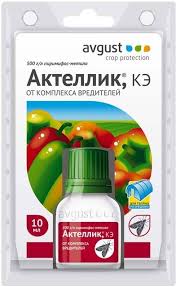
- Fufanon-Nova. Active substance -Malathion (Karbofos), enteric insectoacaricide.
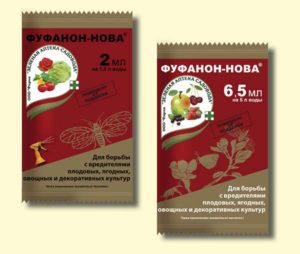
Fufanon Expert = this is a complete analogue of Fufanon-Nova, like Karbofos (they have the same active ingredient - Malathion (Karbofos).
- Vertimek. Active substance - Abamectin, insectoacaricide of intestinal action.
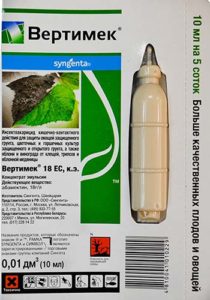
- Karate Zeon. Active substance - Lambda Cyhalothrin, enteric insectoacaricide.
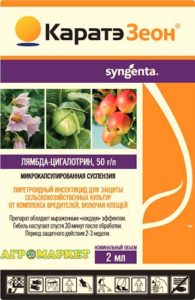
- Apollo. Active substance -Clofentesin, contact acaricide ovicidal action (against summer egg-laying).
- Masai. Active substance - Tebufenpirad, acaricide of intestinal contact action against ticks (has a strong ovicidal effect against summer egg-laying).
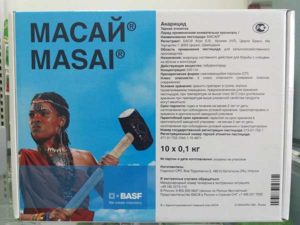
Before using any drug, be sure to carefully read the instructions.
Biological insectoacaricides
- Fitoverm (Aversectin C, enteric insectoacaricide);
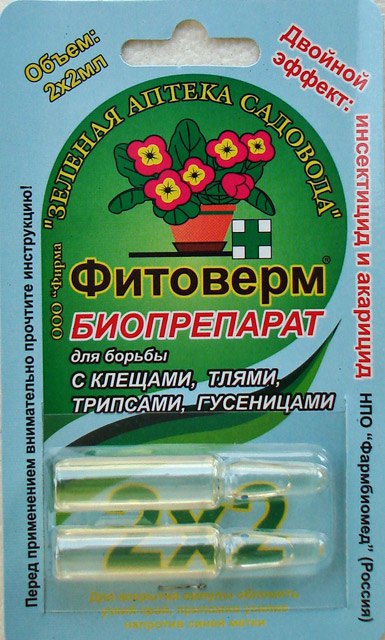
Fitoverm, Aktofit and Kleschevit are complete analogues.
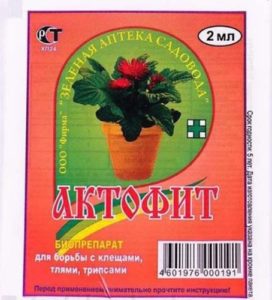
You need to carry out at least 3 treatments with an interval of 7-10 days.
- Bitoxibacillin (Bacillus thuringiensis var. thuringiensis, intestinal insectoacaricide).
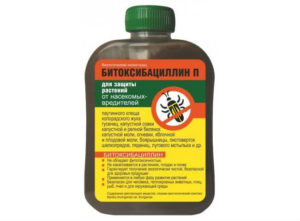
Folk remedy for ticks: heat treatment
- Watering with boiling water (hot water). The procedure is usually carried out in early spring (after leaf trimming), when the air temperature is not lower than +5, but preferably +10 degrees, it is at this temperature that the tick comes out of hibernation. Either already after harvest (and again after pruning)... Hot water must be poured into the center of the bush, where the pests sit (winter).
It should be understood that you will not burn the bushes in any way, because while you bring the bucket of water to the garden bed, while pouring it into the watering can, the temperature will drop to + 60-70 degrees.
But if new leaves have already formed and buds have appeared, then in no case should it be doused with hot water, otherwise you will burn everything.
By the way! In general, the procedure is similar to early spring processing of currants with boiling water.
-
Creation of a bath (steam room)... In summer, after harvesting and trimming the leaves, when it will be hot (+25 .. + 30), you need to cover the bed with foil (for 2-3 days) so that the ticks die under the pressure of high temperatures.
Of course, after such "bath" procedures, strawberries may look "burnt". But after a while, with careful care (watering, feeding), new leaves will begin to grow again.

